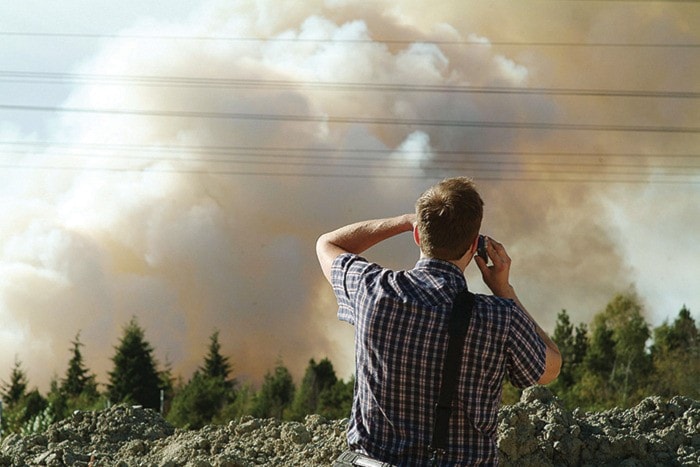The recent hot summer weather might be great for catching a tan, but it can spell trouble for Delta Fire and Emergency Services.
The local fire department is advising residents there is currently an extreme fire hazard in Burns Bog, and with more sunshine and dry weather on the way, the situation is expected to worsen.
The bog has had a long history of summer wildfires. In 2005, more than 200 hectares burned for a week and a half, sending a smoky haze to settle on the Lower Mainland. In 1996, 80 hectares of the bog burned, while 40 hectares burned in 1990.
Lightning strikes and the spontaneous combustion of decaying organic matter can spark wildfires in the bog, as can a discarded cigarette.
Deputy chief Ken Sim said no one should be entering the Burns Bog Conservation Area in order to reduce the possibility of a preventable wildfire.
“You need permits to go in there anyway, but it’s especially important right now,” he said.
Given the difficult terrain in the bog, fighting fires there isn’t easy.
In addition to heat and fatigue, firefighters must contend with unstable footing, falling trees, and even large wasp nests.
“It’s a very dangerous place for us to be,” said Sim. “We always work in pairs and always carry our own emergency medical equipment.”
The peat that makes up much of the bog is flammable, and fire can travel underground before flaring up at the surface. Making matters worse is there is no ready supply of water for firefighters to use.
“It’s a very different kind of fire than a residential structure fire,” said Sim. That’s why every Delta firefighter is specially trained to deal with wildfire situations.
Improvements in the bog’s hydrology over the past decades have resulted in a higher water table, reducing the fire risk somewhat.
But all it takes is one spark to ignite.
“Everyone needs to be careful, especially if forested areas are your playground,” said Sim.
The fire department is currently monitoring fire conditions in the bog daily.
Much of Southern B.C. is currently under a high or extreme fire hazard rating, with an open fire ban being enforced. The burning of any material, smaller than two metres in height and three metres in width, including burning barrels, is currently prohibited, as is the use of fireworks.
Driest July on record
This past month has been the hottest and driest July on record in South Delta, according to Climate Canada data.
Local climate data, which is measured at Tsawwassen Beach, goes back to 1971.
Not a single drop of moisture has been recorded in the month of July, locally. The previous driest July on record was in 1985, when just 0.6 mm of precipitation were recorded.
This past July was also the warmest on record, with a mean temperature of 19.4 C, beating the old mark of 19.2 C set in 2002 and 2003. The typical July in South Delta sees close to 35 mm of rain and a daily average temperature of 16.9 C.
